Author: Techub News
On May 7th, the grand event Bitcoin Devcon, hosted by UTXO Management, co-hosted by Satoshi Lab, and supported by Yakihonne and Web3port, and organized by Techub News, officially kicked off at the Hong Kong Science Park. The conference brought together global Bitcoin developers, engineers, researchers, designers, artists, and investors, aiming to collectively explore the future development trends of Bitcoin and inject new vitality into the global Bitcoin ecosystem.
Bitcoin Devcon is not just a simple gathering, but a landmark event symbolizing the firm commitment of the Bitcoin community to technological innovation and ecosystem development. The choice of this location not only recognizes the crucial role played by Hong Kong in the early development of Bitcoin, but also represents our determination to drive the continuous advancement of the global Bitcoin ecosystem from the historical starting point of Bitcoin activities.
Tyler, Chief Information Officer of UTXO, Founder of Nano Labs, Jack Kong, Advisor of SatoshiLab, and Dr. Wu Jiezhuang, National Committee Member of the Chinese People's Political Consultative Conference and Member of the Hong Kong Legislative Council, delivered opening speeches.

Tyler, as the Chief Information Officer of UTXO, emphasized the importance of Layer 2 innovation in the Bitcoin ecosystem. He believed that these innovations are not a zero-sum game, but rather bring more opportunities to the Bitcoin ecosystem, attracting more projects and builders to enter this field. He emphasized that Layer 2 tools not only provide scaling solutions but also innovatively realize functions such as gaming, DeFi, and tokenization of real-world assets, which have long been overlooked in the Bitcoin ecosystem. Tyler predicted that with the participation of more developers, the Bitcoin ecosystem will become more prosperous and innovative.

Jack Kong listed the top ten reasons for returning to Bitcoin, emphasizing Bitcoin's consensus position in the current bull market and its ultimate role as a token issuer. He believed that it is only a matter of time before Bitcoin surpasses gold, and that the value potential of the Bitcoin ecosystem is enormous. In addition, he also mentioned the transformation of Bitcoin from a zero-yield asset to an interest-bearing asset, as well as the association between Layer 2 opportunities and the prosperity of the Bitcoin ecosystem. Jack Kong also predicted that influential meme projects will emerge in the Bitcoin ecosystem and pointed out that the Chinese are an important force in the Bitcoin ecosystem, with Hong Kong being the core hub of the Bitcoin ecosystem.
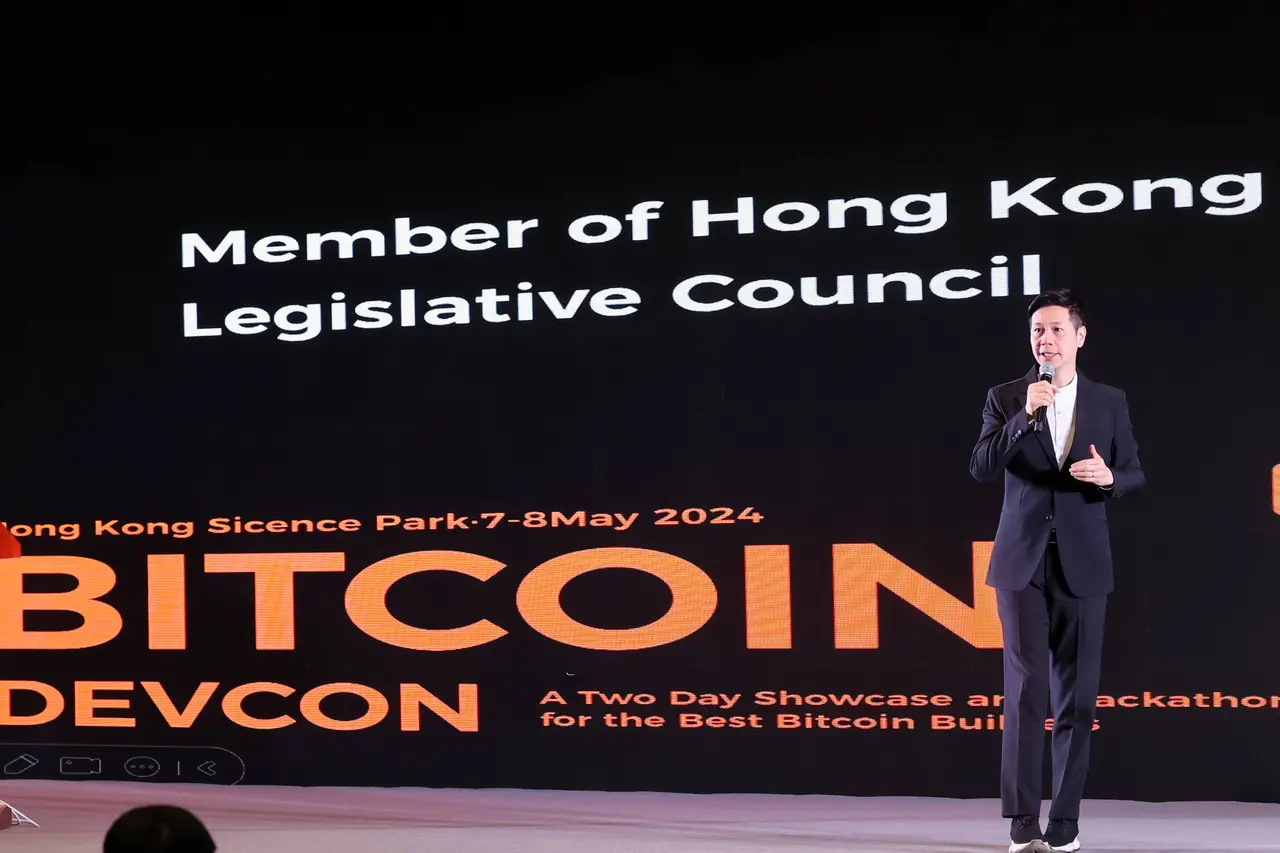
Dr. Wu shared the new developments in Web3 policies and virtual assets in Hong Kong. He stated that Hong Kong is about to launch a new virtual asset training platform and has issued REP2 licenses for virtual assets such as Bitcoin and Ethereum, indicating the legal recognition of these assets by the Hong Kong government. He also mentioned the launch of the first virtual currency spot ETF in Asia last week in Hong Kong, although the trading volume has not reached the level of the United States, it is a positive start. Dr. Wu emphasized the importance of this innovation for the initial integration of traditional financial markets and virtual asset markets, believing it to be an important progress for Hong Kong and even the world in the field of virtual assets.
Subsequently, representatives of 7 well-known Bitcoin Layer 2 projects delivered speeches.

HaKan, Chief Government Relations Officer of BEVM, stated that since the successful launch of the mainnet, BEVM has achieved over 1 billion transactions on-chain. BEVM is committed to simplifying the developer experience, enabling one-click deployment of smart contracts, and introducing a new structure consensus mechanism with the goal of achieving the circulation of large coins across different chains. The vision of BEVM is that in 100 years, Bitcoin will become the infrastructure running the world, and BEVM will be the key to building the entire financial system on Bitcoin. Hakan believed that Bitcoin's renewed attention is a positive signal, especially with the launch of Ordin Runes protocol, where transaction fees growth has exceeded mining revenue, demonstrating the vitality and prospects of the Bitcoin ecosystem. He emphasized the importance of this progress for Bitcoin miner incentives.

Willem, CEO of Botanix, predicted an important moment for Bitcoin in 2024. He stated that building on Bitcoin has been challenging in the past, but now it has become easier, thanks to the team providing an Ethereum-compatible EVM equivalent. This innovation allows smart contracts on Ethereum to be replicated on Bitcoin, leveraging a large capital pool. With in-depth research and cryptographic background support, William's team believes that Bitcoin will become the infrastructure used by hundreds of millions of people worldwide in the future. He emphasized the uniqueness of Bitcoin as a purely decentralized secure currency, while EVM operates as a software layer following the rules of an operating system.

Jeff, founder of Merlin Chain, reviewed the changes in the Bitcoin ecosystem and emphasized the key role of Layer 2 solutions in improving transaction efficiency, fairness, and asset innovation. He pointed out that Layer 2 not only optimizes transaction performance but also provides support for new types of assets such as NFTs, demonstrating unique advantages in asset issuance. Jeff stated that Merlin Chain is focused on improving asset liquidity and supporting the trading of first-layer and second-layer assets, and building more asset liquidity on the second layer.
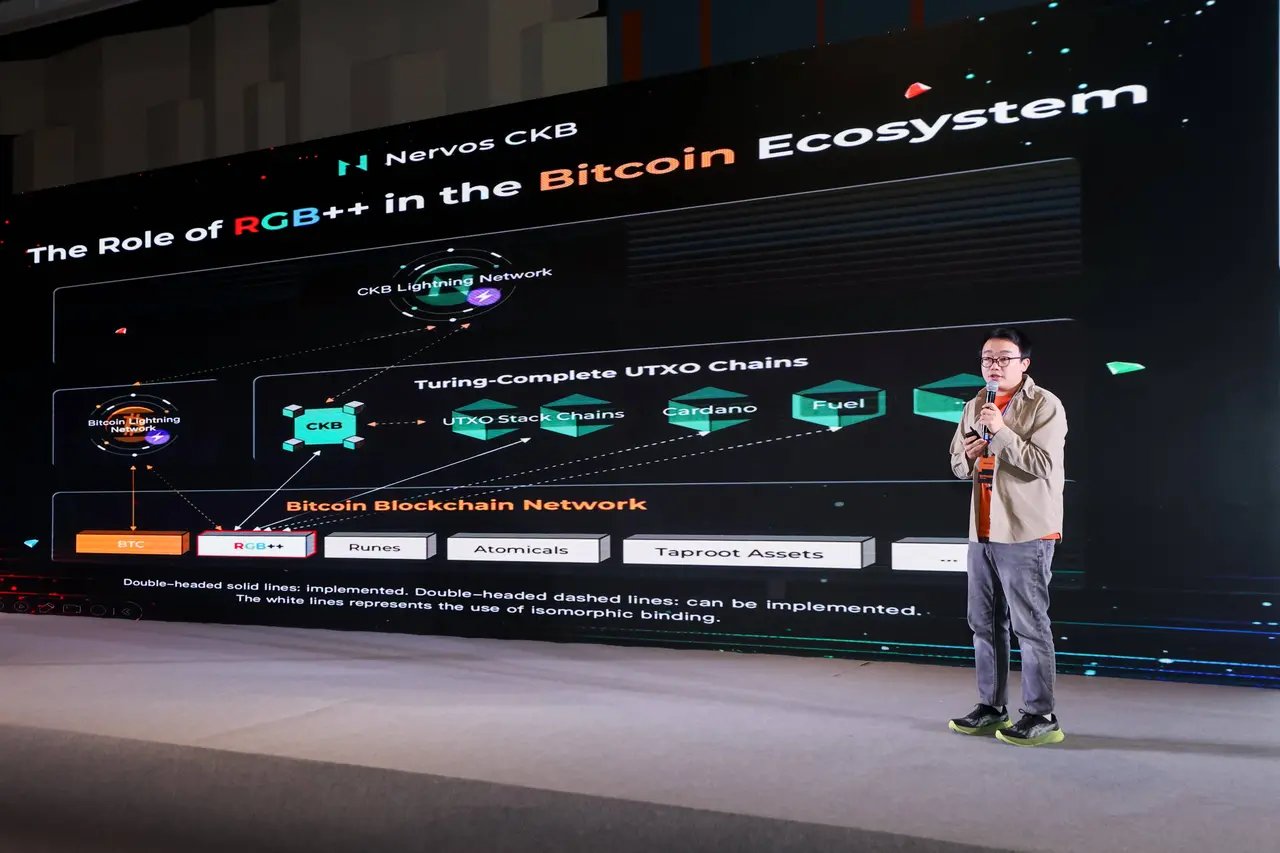
CKB Baiyu introduced CKB's RGB++ protocol, which allows assets in the Bitcoin ecosystem to seamlessly access the CKB chain without the need for cross-chain bridges. Despite the large market value of Bitcoin, the number of assets issued on it is relatively small, and CKB sees huge potential in issuing NFTs and FTs. To address the issue of first-layer protocol selection, CKB proposed RGB++, characterized by building a smart contract system off-chain, allowing users to independently host data and self-verify without relying on centralized entities. As a smart contract platform running for four years, CKB collaborates with global miners and mining farms, undertakes RGB++ assets through UTSO technology, and provides one-click activation of UTSO chain functionality, achieving the free flow of assets between the Bitcoin chain, CKB chain, and UTSO chain.

AINN Layer2 Business Development Director Atlas looked forward to the broad application prospects of Bitcoin and blockchain in the field of AI in his speech. He emphasized the importance of decentralized AI and proposed the key combination of Layer 2 and AI. Through zero-knowledge proof technology, Layer 2 protects user data privacy while promoting the training and application of AI models. In addition, Layer 2 also provides necessary incentives for the AI ecosystem, addressing the issue of lack of incentives for open-source models. Therefore, the application of Layer 2 in the field of AI will drive the development of the Bitcoin and blockchain ecosystems. AINN is committed to bringing the benefits of this technology to more people through the combination of Layer 2 technology and AI.
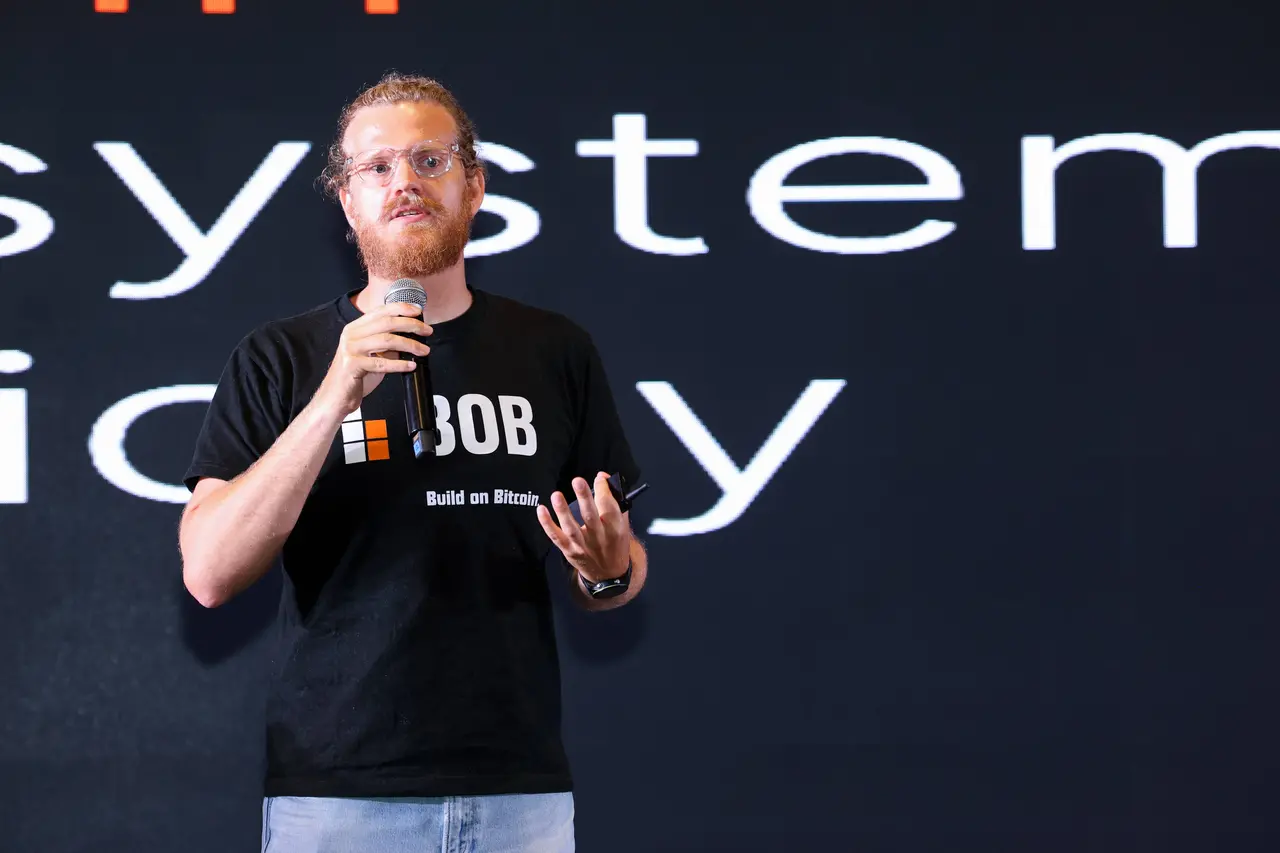
Co-founder Dominik Harz of BOB stated that BOB is an innovative hybrid L2 that combines the features of Bitcoin and Ethereum, aiming to bridge the innovation gap in the Bitcoin ecosystem by combining the strengths of both. By introducing Rollup technology and trustless bridging, BOB enhances transaction processing capacity and scalability while maintaining the security of Bitcoin. It supports EVM compatibility, allowing developers to deploy Ethereum dApps on Bitcoin.
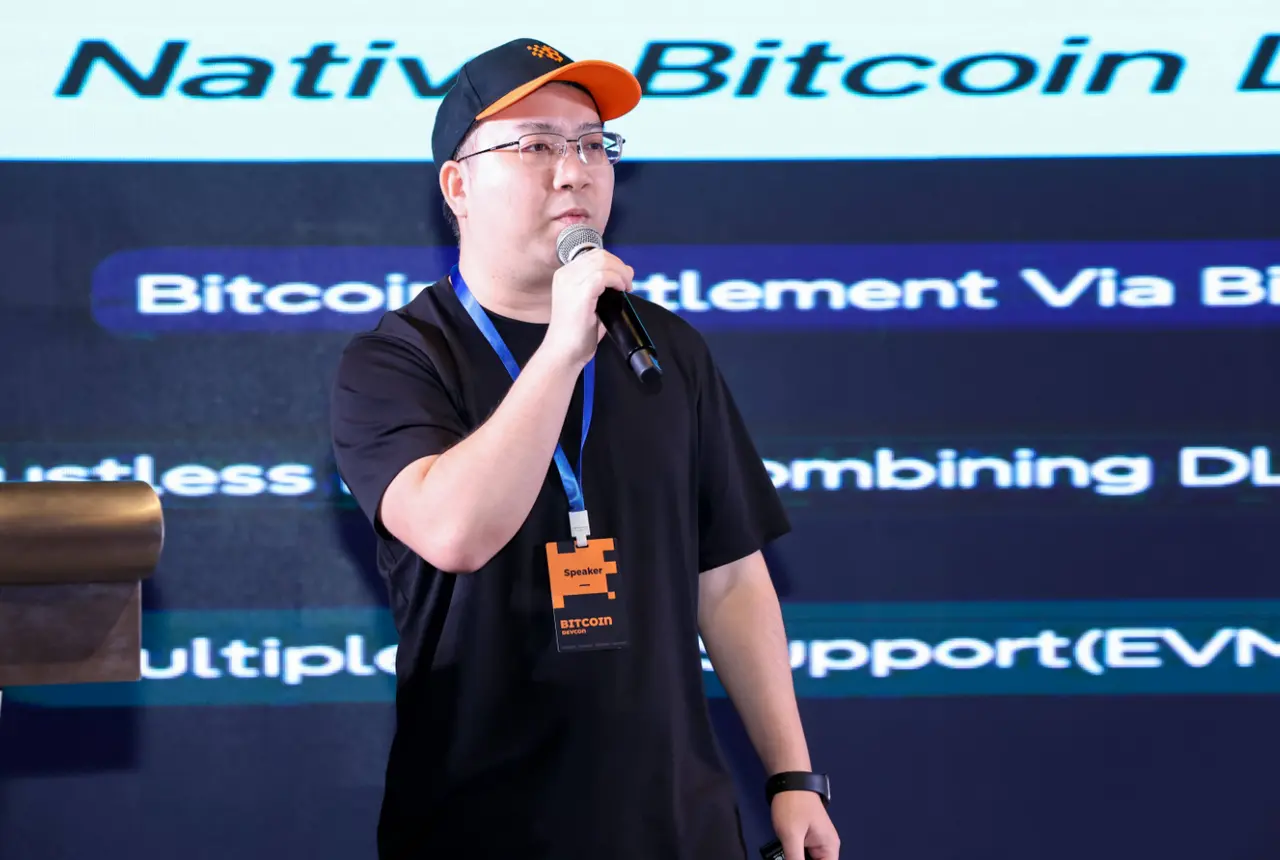
Founder Kevin of Bitlayer stated that one of Bitlayer's goals is to solve the verification issues on the Bitcoin chain. Bitlayer can be seen as a smart contract system built on top of Bitcoin with powerful capabilities. The goal is to bring Ethereum-like programmable, decentralized computing capabilities to Bitcoin, while providing a more economical and faster on-chain application experience, all under the equivalent security guarantee of Bitcoin layer 1.
As the event progressed, the climax of the first day of Bitcoin Devcon—three roundtable discussions were held successively.
Roundtable 1: Paving the Way for Developers—Difficulties and Challenges in Building the Bitcoin Ecosystem

Moderated by John Riggins, Partner of UTXO Management, Zack, Marketing Director of Botanix, Kevin, Founder of Bitlayer, and Dominik Harz, Co-founder of BOB, discussed the various difficulties and challenges developers face in building the Bitcoin ecosystem. They generally believed that the lack of educational resources and a lack of understanding of the unique nature of Bitcoin are the main factors hindering developers from entering this field. At the same time, how to achieve scalability while maintaining Bitcoin's decentralization and security has also become a major technical challenge. The guests also shared their work experience and insights in the Bitcoin ecosystem, providing valuable advice and guidance to the developers present.
Roundtable 2: Promoting Innovation in the Bitcoin Ecosystem—New Opportunities for Layer 2

Moderated by Jennie, Hakan, Chief Government Relations Officer of BEVM, Jeff, Founder of Merlin Chain, CKB Baiyu, and Atlas, Business Development Director of AINN Layer2, gathered to discuss in-depth the new opportunities that Layer 2 technology brings to the Bitcoin ecosystem. The guests generally believed that Layer 2 technology is key to innovation in the Bitcoin ecosystem, enabling more efficient transaction processing and lower transaction costs, thereby attracting more users and applications. At the same time, they also pointed out the challenges and issues faced by Layer 2 technology, such as security, privacy protection, and interoperability.
Roundtable 3: Exploring Institutional Investment Strategies in the Bitcoin Ecosystem
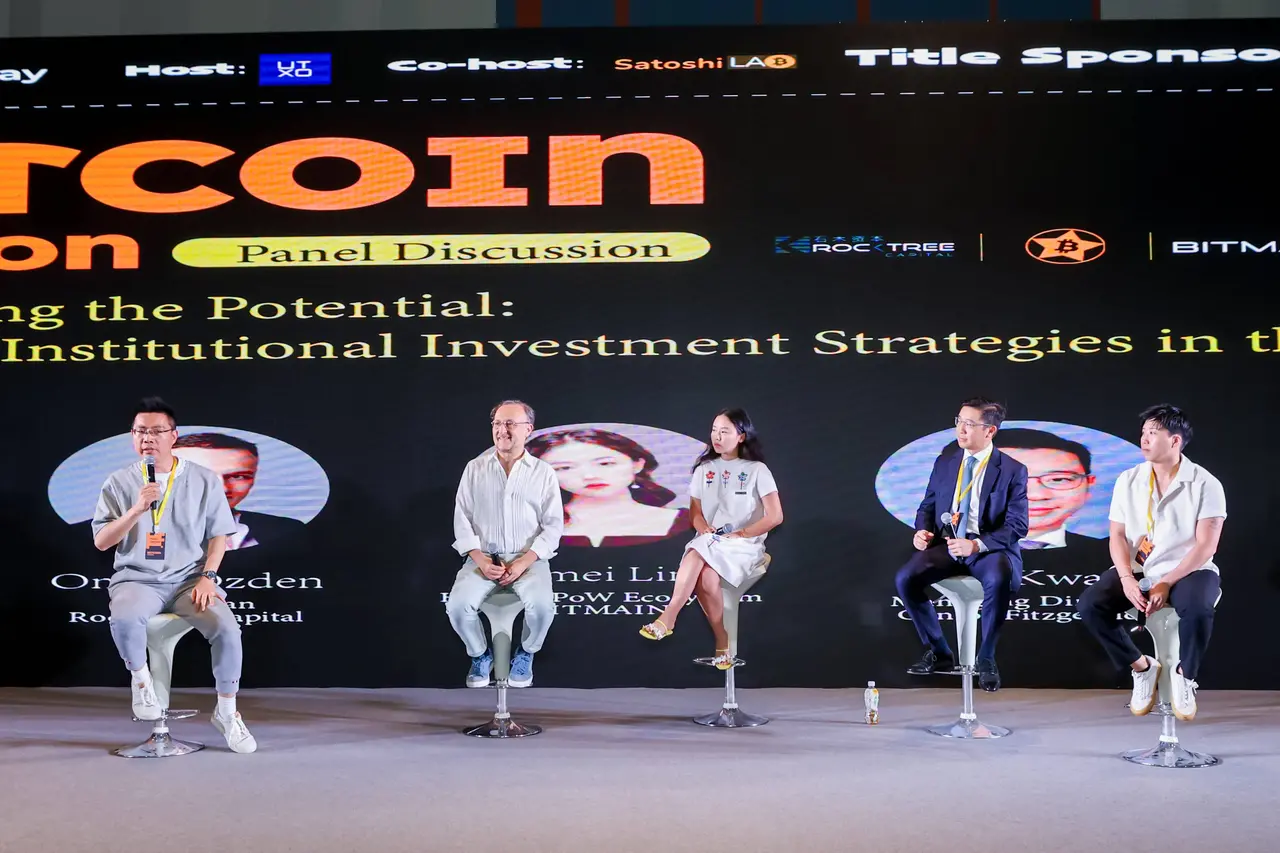
Moderated by Jademont, Founding Partner of Shuidi Capital and Partner of Satoshi Lab, Rebecca Chow, Director of Investment Research at ViaBTC Capital, Albert Liang, Founder and CEO of Bitcoin Startup Lab, Xmei Lin, Head of PoW Ecosystem at BITMAIN, and Roy Kwan, Managing Director of Cantor Fitzgerald, participated in a discussion on how institutions can invest in the Bitcoin ecosystem. They shared their views and experiences, believing that institutional investors play an important role in the development of the Bitcoin ecosystem. By formulating appropriate investment strategies and risk management measures, they can promote the widespread application and development of Bitcoin while achieving their own investment return goals.
As Bitcoin Devcon continued, the ecological projects of various well-known Bitcoin Layer 2 projects appeared in the hackathon, showcasing their innovative technologies and solutions.
AINN Layer2 Ecological Project Team
1. AINNGPU
The AINNGPU team presented their main work in the hackathon competition: providing an elastic computing power network. With the development of AI, the demand for GPUs is increasing, especially in inference. AINNGPU forms an elastic computing power network by collecting various idle computing power to meet the needs of project parties or users. Compared to other computing power providers in the market, AINNGPU provides optimized computing power and selects GPUs near the user as much as possible to ensure service quality and efficiency. In addition, AINNGPU collaborates with the ecological project "Ain Hider" to generate NFTs from uploaded photos and publish them on the chain.
In terms of architecture, AINNGPU is divided into three layers: the user layer, the data exchange layer, and the gene equation concept layer. The user layer is responsible for receiving various user applications; the data exchange layer is responsible for matching user needs; and the gene equation concept layer involves the transmission, monitoring, and operation of AI models. When users use it, AINNGPU selects the optimal node to provide services based on the demand situation.
2. Sweety AI
The Sweety AI team showcased a platform that combines AI and blockchain, providing a new experience for interacting with a personalized AI partner. Users can forge an AI girlfriend, and the more interaction, the more Sweety points they earn, which can be used for more interaction or trading. The introduction of the NFT mechanism allows users to convert interactions into valuable assets while participating in the NFT market. The platform uses advanced technology to ensure consistent AI responses and deep reinforcement learning. It demonstrated an AI platform full of innovation and potential with a promising future.
3. Camelot Protocol
The Camelot Protocol team stated in their introduction that they are building a robust and reliable ecosystem. Despite recent fluctuations in the prices of major cryptocurrencies, and even a temporary decline, they believe that this cannot negate the value of the entire cryptocurrency market. They believe that although some claim that Bitcoin does not need an ecosystem, the cryptocurrency market as a whole still has great potential.
The Camelot Protocol team stated that they are working on developing a platform for training AI models using idle GPU resources, which is suitable for mobile devices or other variable devices and runs in the Bitcoin ecosystem. As one of the early third-layer solutions in the Bitcoin ecosystem, they support multiple changes and have introduced the innovative Satoshi consensus mechanism.
Specifically, the Satoshi consensus mechanism combines the staking assets within the Bitcoin ecosystem and the Proof of Work (PoW) for providing AI computing capabilities. The Proof of Stake (PoS) allows users to bind assets to the Bitcoin ecosystem, including Bitcoin itself and other derivative assets such as Soft Bitcoin. This mechanism provides users with the opportunity to convert temporary interactions into valuable assets.
CKB Ecological Project Team
1. UTXO Swap
The UTXO Swap team introduced their project UTSO swap, based on the Cell model, using UTSO's Turing completeness, restriction clauses, and transaction types to achieve liquidity. They chose UTSO to explore application design and expression capabilities, integrating off-chain matching and on-chain settlement mechanisms. The goal is to provide better trading and issuance services for RG family assets, utilizing UTSO's parallel execution and transaction fee setting capabilities. In terms of design, the team uses restriction clauses to express user intent and ensures the correctness of AMM calculations through transaction types. Finally, they use an off-chain liquidity matching system for unified on-chain settlement. In summary, they emphasized the advantages of UTSO and how to use it to provide high-quality services for assets.
2. Stable++
Stable++ representative Benjamin briefly introduced their project at the meeting. They are building a decentralized stablecoin based on the RGB++ protocol, which will be based on the Nervos network and serve the entire Bitcoin ecosystem. Benjamin pointed out the lack of stablecoins in the current big coin ecosystem, which is crucial for the growth of the ecosystem. Therefore, Stable++ is committed to launching a decentralized stablecoin USD PP pegged to the US dollar to meet the needs of the UTXO ecosystem. He briefly described the technical design of the project, including issuing stablecoins based on RGB++, and using the Nervos network to extend the UTXO network to achieve complete collateralization and liquidation functions. Finally, Benjamin invited interested parties to follow their Twitter account for more details and experience the demo that has been launched.
3. Unistate
The Unistate team introduced their project—a universal indexer framework focused on the Bitcoin ecosystem, benchmarked against Ethereum's Graph Alchemy. The framework is a distributed indexing service designed to address the infrastructure gaps in application development within the Bitcoin ecosystem. As the data structures of Bitcoin and CKB are UTXO, a fine-grained data structure, but when developing applications, developers need an aggregated application view to obtain comprehensive data. Therefore, the indexer becomes crucial in the application development process for CKB and BTC. Unistate will support UTXO graph queries and various associative queries to accelerate the development process of Bitcoin ecosystem applications. Additionally, the framework aims to standardize different lockout periods, allowing protocol developers to easily create and deploy their lockout periods, thereby expediting the data integration process in wallet, exchange, social, and NFT application scenarios. Unistate provides a tailored solution for the Bitcoin ecosystem.
BEVM Ecological Project Team
1. Bido Finance
The Bido Finance team introduced their technical principles and hackathon design at the afternoon meeting. Bido Finance is a decentralized liquidity staking protocol in the BM ecosystem, issuing innovative wild PSP BTC through staking to provide liquidity for stick BTC assets. The ecosystem includes stick issuers, Bido smart contract collections, and node operator collections. The Bido protocol operates a leading multi-validator node group to prevent single-point failures, simplify node deployment, and monitoring. Validator nodes perform consensus-related tasks in the BM, generate blocks, and bid for transactions, which is also a source of Bido's revenue. The entire protocol is governed by DAO, including key decision-making, parameter deployment, and selection of node operators. In addition, the Bido team introduced their design in the hackathon, including a decentralized cross-year bridge based on the master design of Bitcoin, and basic designs to prevent replay and double spending, such as using unique identifiers to mark transactions, introducing time windows, and block confirmations.
2. oooo Protocol
The oooo Protocol team introduced their product, aiming to enhance interoperability and composability in the Bitcoin ecosystem. They found fragmentation issues with assets between L1, L2, and L2, leading to high friction and low speed for cross-chain activities. They hope users can manage all assets in a unified asset abstraction layer without considering differences between chains. The team proposed to build an interoperability layer and abstraction layer to ensure minimal friction and maximum transaction speed, and ensure reliable communication through a cross-chain communication protocol. They plan to collaborate with partners to implement a decentralized messaging layer and build an intelligent routing layer to determine asset sources and target chains based on chain PS, congestion levels, and asset balances. Finally, they showcased the design of the asset abstraction layer, achieving a smooth user experience through dress Mapping and unify identify, and providing developers with an SDK to simplify integration with various public chains.
3. Satoshi Protocol
The Stoshi Protocol team, represented by Ray, introduced their project. Stoshi Protocol is a CDP stablecoin protocol based on the Bitcoin ecosystem, allowing users to issue stablecoins using their Bitcoin. The protocol aims to transform Bitcoin from idle assets into a trading tool, becoming a crucial infrastructure and engine in the Bitcoin ecosystem. Ray mentioned that with the arrival of the Bitcoin season, the market capital continues to expand, and many Bitcoin projects are being launched. Stoshi Protocol chose to launch on BBM first because BBM focuses on technology and security. They use the CDP model, collateralizing debt positions, rather than decentralized stablecoins or algorithmic stablecoins, as the latter may be unstable. Additionally, they have established a cross-chain bridge for stablecoins, allowing them to be used not only on the Bitcoin layer but also on other chains.
Bitlayer Ecological Project Team
1. APRO Oracle
APRO Oracle is an innovative system designed to create stablecoins and build a bridge to the Bitcoin mainnet. It ensures the security and authenticity of price information through a two-step price aggregator while minimizing operational costs. The system also uses socket noise to generate random numbers, providing random services for various projects, and ensures network security and reliability through a dual-layer network. Currently, APRO Oracle has established systems on Bit Layer Lynching and IPQ, and plans to develop an Oracle on Safety compatible with UGX0. As the first system dedicated to the Bitcoin ecosystem, APRO Oracle demonstrates its unique value and potential in the cryptocurrency field.
2. iSwap
The iSwap team continued to introduce their project. iSwap provides liquidity for the Bitlayer cost system, offering investment and cash tools for numerous projects. They do this for three reasons. First, as long-term investors, they have invested in 150 companies and top global funds over the past 15 years and found that SWA is crucial for every ecosystem. Therefore, they provide liquidity for traditional markets and the Solana ecosystem, and will also provide liquidity for multiple L1 and Bitcoin ecosystems this year. Second, they believe the Bitcoin system is a huge opportunity because more and more people believe there is too much friction and high gas fees between different layers, so more projects are turning to the Bitcoin system. Finally, they have invested in many projects with Bitlayer's founders, including Charlie, and believe that Bitlayer's established clearing and exchange systems, as well as collateral and derivative systems, are a huge opportunity. They believe that liquidity here will be very active as more projects join.
3. Pika
Adele, representing the Pika team, introduced themselves as the first launchpad on Bitlayer, dedicated to helping new projects or startups grow. Bitlayer enhances the practicality of Bitcoin, making it a usable network, not just an investment or digital asset. As a comprehensive service provider, Pika offers incubation, fundraising, token listing, backend services, and community development support for projects. They not only collaborate with others in the room but also have their own community, currently with about 20,000 followers in Asia. Pika Coin itself also has some different functions.
BITLAYER Ecological Project Team
1. BitParty
BitParty is building the first asset gamified community network in the Bitcoin ecosystem to drive larger-scale asset gamification. The project, based on the BITLAYER platform, integrates racing culture elements and launches the TOKEN Rally "Tox Party". Players can join different asset legions, compete for territory to win points, and exchange Token BDBX. Points are influenced by various factors, including TVL, transactions, prices, and legion addresses. Most notably, the project supports various FP and NFT, allowing players to join legions through simple operations. NFTs are transformed into skill cards, providing different skills, and ultimately selecting core skills. The TOKEN Rally is set to be deployed and expected to go live in May or June, looking forward to player participation.
2. Laming Finance
Nary, representing the Laming Finance team, is the founder and CEO of the company. Since 2020, he has been serving as a DeFi builder and trader on-chain. As someone who has previously worked as a product manager in Silicon Valley and has had multiple successful exits, he later joined Crad 5, leading and driving private activities. However, he grew tired of traditional finance, finding it too slow. Nevertheless, this experience made him deeply aware of the importance of decentralized finance and trustless infrastructure. Therefore, last year he quit his job to focus on building DeFi and Bitcoin DeFi, and assembled a team of cryptonatives from the world's largest exchanges with over 20 years of experience in DeFi and CeFi.
Laming Finance aims to empower Bitcoin DeFi by improving interoperability, bringing a seamless experience. Currently, there are over $1 trillion in Bitcoin market applications waiting to be unlocked and deployed into the entire DeFi ecosystem. In the past 30 days, the flow from EVM and non-EVM to Bitcoin Alt2s has exceeded billions of dollars, indicating that the Bitcoin DeFi market is still in its early growth stage, and there are currently many different Bitcoin Altis lacking interoperability, leading to fragmented liquidity. With service upgrades, there may be hundreds or even thousands of new chains coming online in the future, further exacerbating the fragmentation of liquidity.
Therefore, Laming Finance is committed to addressing this issue and providing a solution for the entire DeFi ecosystem.
3. Quantytica
The Quantytica team introduced their project—a one-stop blockchain solution platform or aggregator supported by the Finnish government. In the blockchain ecosystem, many novice or institutional users face difficulty in choosing which project is more stable and secure. Quantytica found that users have a high learning cost, which reduces the adoption rate of technology.
They use LSM's AI model, combined with backtesting used by the Jiangsu Bank and on-chain real-time simulation framework, to help users with project audits, comparisons, and profit analysis, and then build the best routes for users. Whether users want short-term operations, cross-chain activities, or long-term investments, Quantytica provides strategies through smart routing. In the first phase, they provide smart routing for users to automate participation; in the second phase, they will open risk management and real-time simulation frameworks for user participation; in the third phase, they will allow users to create smart routes themselves.
In summary, Quantytica aims to reduce the uncertainty and risk for users in choosing projects through AI analysis and route integration, automating the entire blockchain ecosystem.
Merlinchain Ecological Project Team
1. iORACLE
The iORACLE team, represented by Kayla, introduced iORACLE as a programmable, decentralized computing network, characterized by running blockchain indexing on low-frequency networks to build a high-performance, highly secure oracle. The framework developed by the team allows Bitcoin's blockchain index to run on user's phones, computers, routers, or even Raspberry Pis, and provides a programmable layer for developers to deploy their own protocols and programs. In the Bitcoin ecosystem, iORACLE is suitable for building the indexer needed for new protocols and supports interaction with other protocols. iORACLE aims to be a decentralized, open indexer infrastructure, reducing friction in the flow of blockchain data. Its application scenarios are diverse, such as building decentralized indexing services and providing modular services for well-known Layer 1 protocols. Additionally, the framework can be used for any blockchain. In the Merlinchain ecosystem, iORACLE provides deterministic database outputs and supports the use of smart contracts and DApps. The team also showcased the transaction indexer and calculation demo made for Merlin and plans to provide more product design details tomorrow afternoon. In conclusion, iORACLE plays an important role in the Bitcoin ecosystem, providing developers with a flexible, secure computing network.
BOB Ecological Chain Project
1. Mosr People
The Mosr People team's presentation focused on solving the problem of insufficient memory in phones and computers. They proposed a decentralized network storage solution, allowing users to purchase devices similar to hard drives to place at home and utilize surplus space through home network sharing. Files are hashed and uploaded to the chain, and files with the same hash value can be accessed from the service area, enabling global access and sharing at any time. Using IPV6 technology, they solve the problem using home broadband upstream, combined with external blockchain technology to help others access data and earn commissions. In addition, Mosr People also provides encrypted note functionality, with content visible only to the user, and the uploaded content is also encrypted. They plan to upload file hashes and encrypted note content to the blockchain and write contracts for users to access. In summary, Mosr People aims to provide decentralized, secure, and convenient storage services.
2. Buddy Guard
The Buddy Guard team introduced their project, aiming to provide real-life social support and security for digital nomads. Through unique website technology, they use secure tracking features, allowing users to choose familiar people to provide security when attending website meetings, while protecting personal privacy. In emergency situations, private information is encrypted and released to those in need of support. Additionally, they provide other social support features, such as limited hangouts and zero-knowledge proof-based hangouts, combined with applications that integrate with real-life social graphs. In conclusion, Buddy Guard aims to provide users with more comprehensive social support and security through technological innovation.
3. SUPA
The SUPA team introduced their project SUPA, which is a BTC-based portfolio tracker. They stated that SUPA will combine Magic Eden's NFT trading and other features, as well as Zapper's DeFi and inactive portfolio management features, to provide users with a comprehensive portfolio tracking platform. They plan to build and launch the platform first on BOB and CKB, continuously improve features and enhance user experience, while integrating more assets and analysis tools. They hope to become the most efficient and cost-effective portfolio structure, contributing to the NBC ecosystem. They have already completed the development of the interface and prototype and showcased the initial design of the portfolio management page. Finally, they stated that they will launch a complete tracking platform in the short term and are committed to supporting and expanding the functionality of SUPA in the long term.
Botanix Ecological Project
1. Botanic Club
The Botanic Club team introduced their project—Ancestor Snowsliders. They pointed out that most current map features are primarily image- or statement-based, lacking long-term value. In contrast, their project integrates traditional Asian cultural elements, especially Chinese ancestral worship culture. They mentioned the traditional custom of "burning paper money," emphasizing that it is a sign of respect for ancestors and is part of Chinese culture and other Asian cultures. Although a similar project briefly appeared on Solono Champs before, it failed to continue due to a lack of long-term value and deep cultural considerations. Botanic Club aims to name and give complete strategy and connotation to this tradition, making it a project with long-term value. They plan to create a social game that combines Chinese cultural elements, allowing users to experience and participate in worship activities to pray for and pay respects to their ancestors.
2. Bitperp
Bitperp Team
The Bitperp team introduced their project, which is the next-generation tool for rune traders. They pointed out that the current challenge for rune trading is how to efficiently complete trades in a limited time and mentioned the need for a leverage mechanism to attract more traders. They believe that with the continuous expansion of the ERC and BRC markets, rune trading has tremendous potential. The team stated that they are primarily targeting the Asian market, as the region has tremendous potential in terms of liquidity, especially in China and Southeast Asia. Additionally, despite the presence of competitors in the market, they plan to integrate major L2 platforms into their tool to provide a better user experience. Finally, they mentioned that the current trading tools in the market mainly support spot trading, while their tool will support leverage trading to meet the needs of traders.
At the conclusion of the Bitcoin Devcon Ecological Project Hackathon, a carefully prepared VIP banquet officially kicked off. This is not just a simple celebration banquet, but also a recognition of past achievements and a vision for the future.

The banquet was sponsored by exSAT, the docking layer project that expands the BTC ecosystem. This not only reflects exSAT's deep participation and support for the Bitcoin Devcon event but also demonstrates its firm determination in promoting the development of the Bitcoin ecosystem.
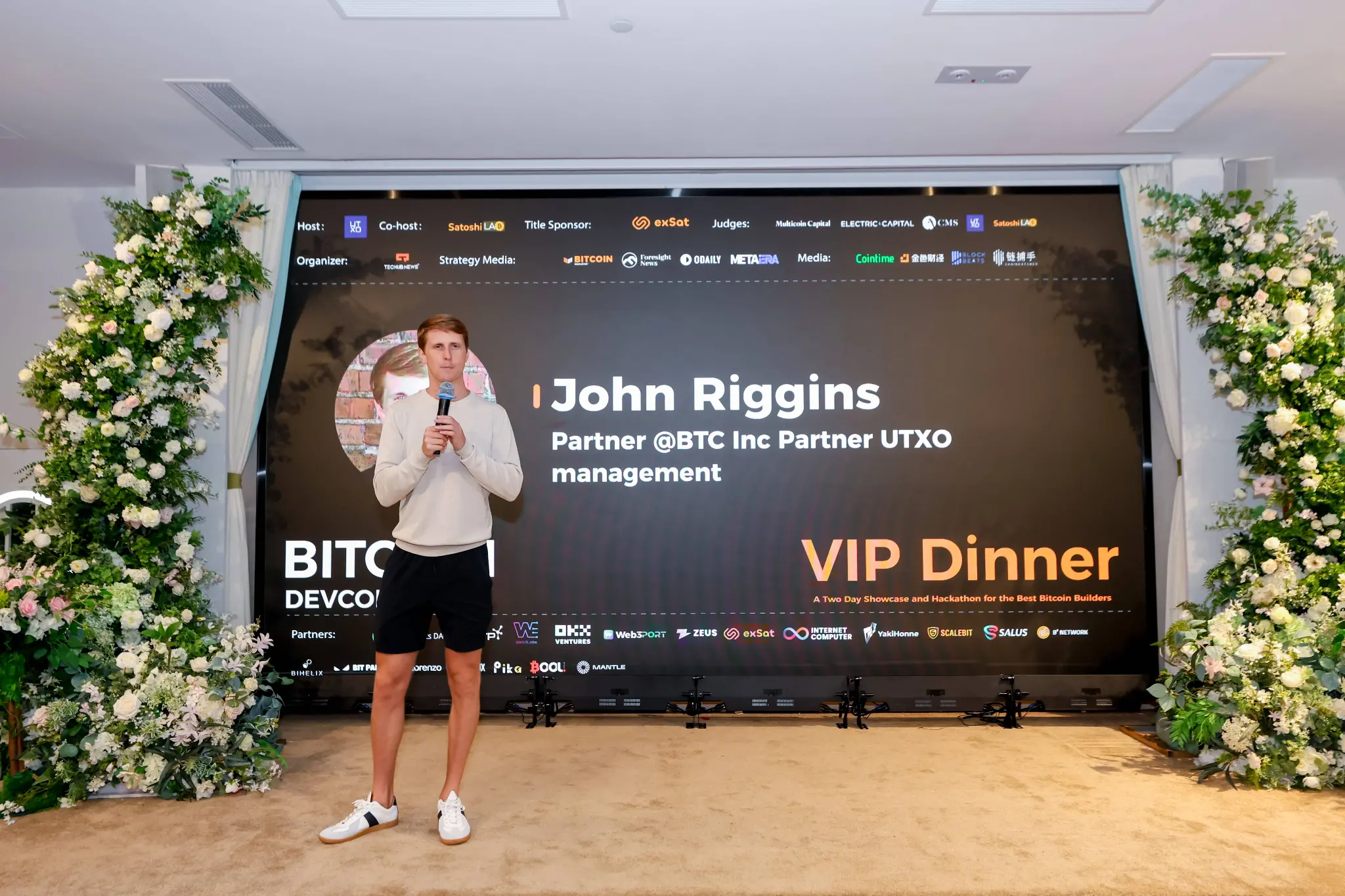
At the beginning of the banquet, John, a partner at UXTO, delivered a passionate speech. He first expressed his joy at the hosting of BitcoinAsia in Hong Kong and pointed out that this was the first appearance of Bitcoin Magazine at a Bitcoin conference, marking a milestone. John highly praised the entrepreneurial atmosphere in Hong Kong and thanked the Hong Kong government for its support in the Bitcoin field. He believed that with the joint efforts of the government and the community, the Bitcoin ecosystem will achieve even more brilliant achievements in Asia and globally.
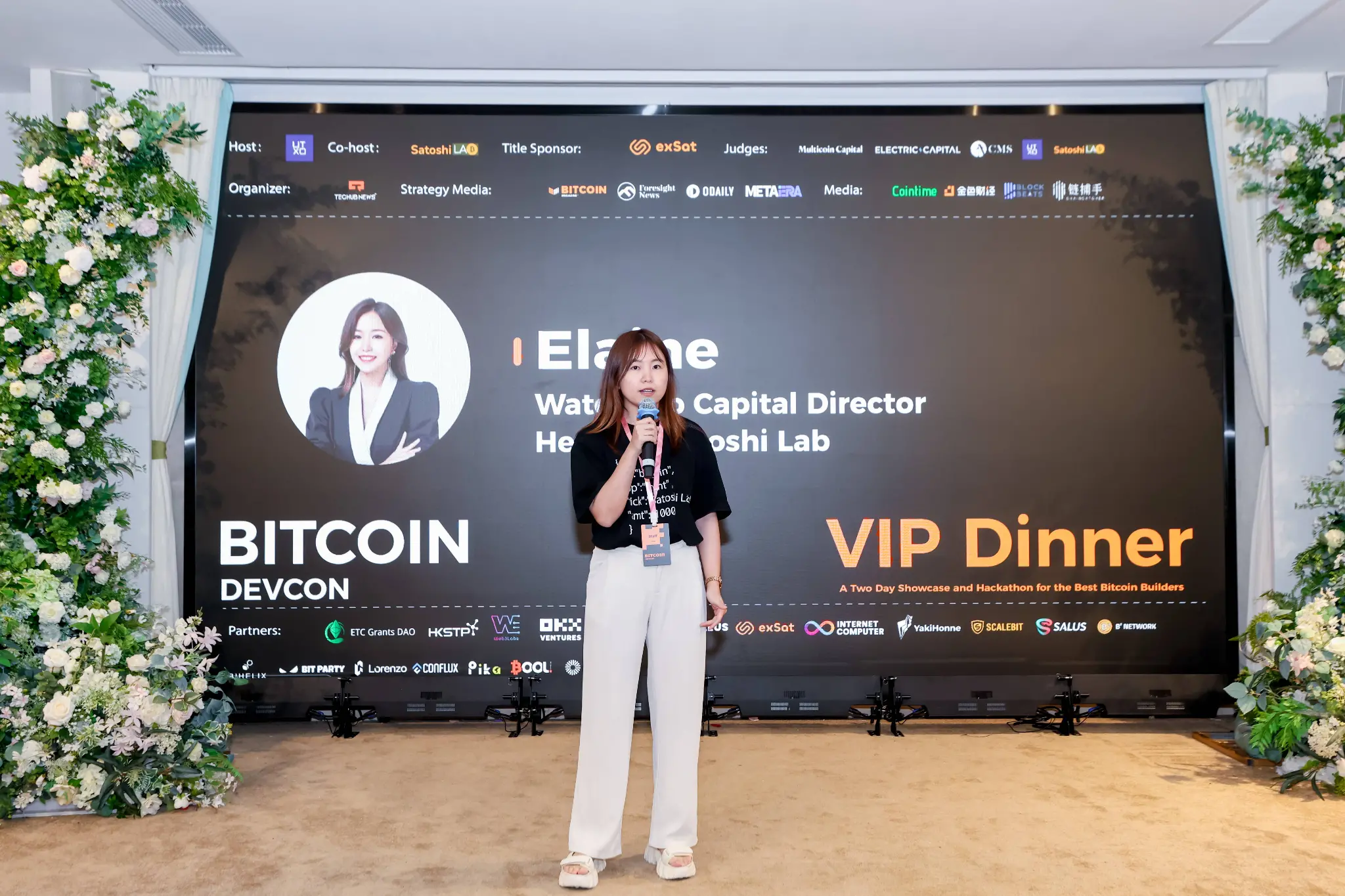
Next, Elaine, the head of Satoshi Lab, also took the stage to speak. She expressed amazement at the rapid development of the Bitcoin ecosystem in a short period and specifically mentioned the important role and increasing influence of the Chinese community in the Bitcoin ecosystem. Elaine stated that as a Hong Kong-based entity focused on evangelism, research, and investment in the Bitcoin ecosystem, Satoshi Lab will pay more attention to supporting Hong Kong and Chinese Bitcoin entrepreneurs and work with them to create the future.

The atmosphere at the banquet was lively, with guests exchanging experiences and sharing insights, collectively strategizing for the prosperous development of the Bitcoin ecosystem. This was not just a simple banquet but also a collision of ideas and an exchange of emotions. It marked the successful conclusion of the first day of Bitcoin Devcon activities and foreshadowed a brighter future for the Bitcoin ecosystem, looking forward to tomorrow's Demo Day.
免责声明:本文章仅代表作者个人观点,不代表本平台的立场和观点。本文章仅供信息分享,不构成对任何人的任何投资建议。用户与作者之间的任何争议,与本平台无关。如网页中刊载的文章或图片涉及侵权,请提供相关的权利证明和身份证明发送邮件到support@aicoin.com,本平台相关工作人员将会进行核查。




